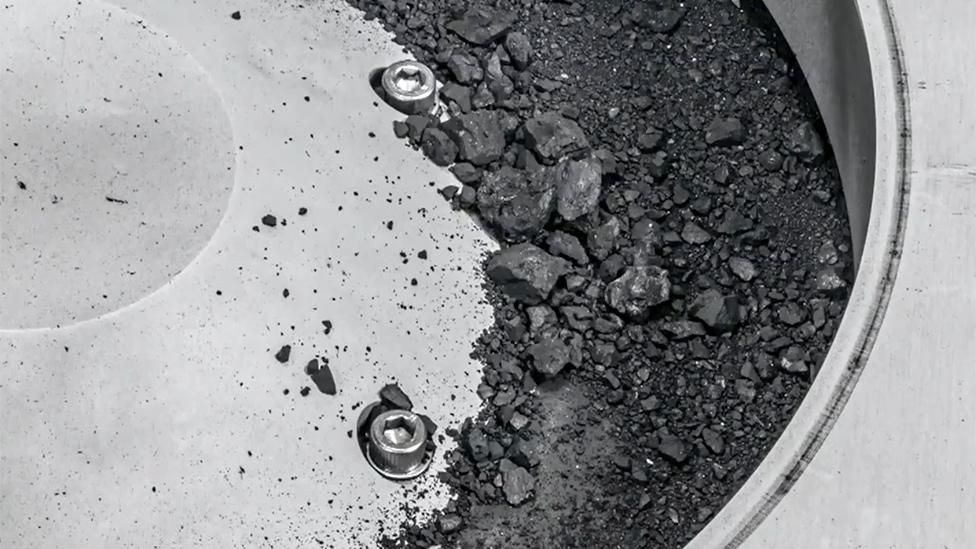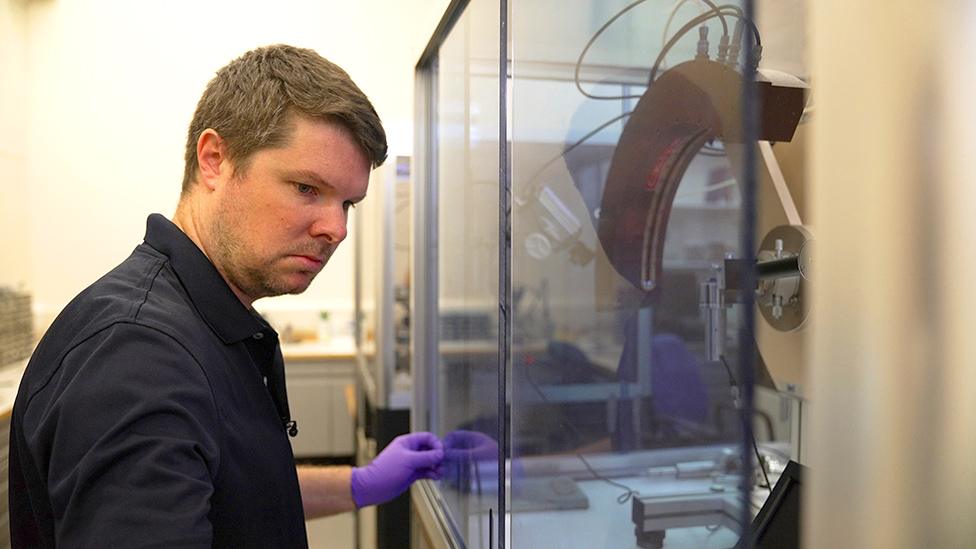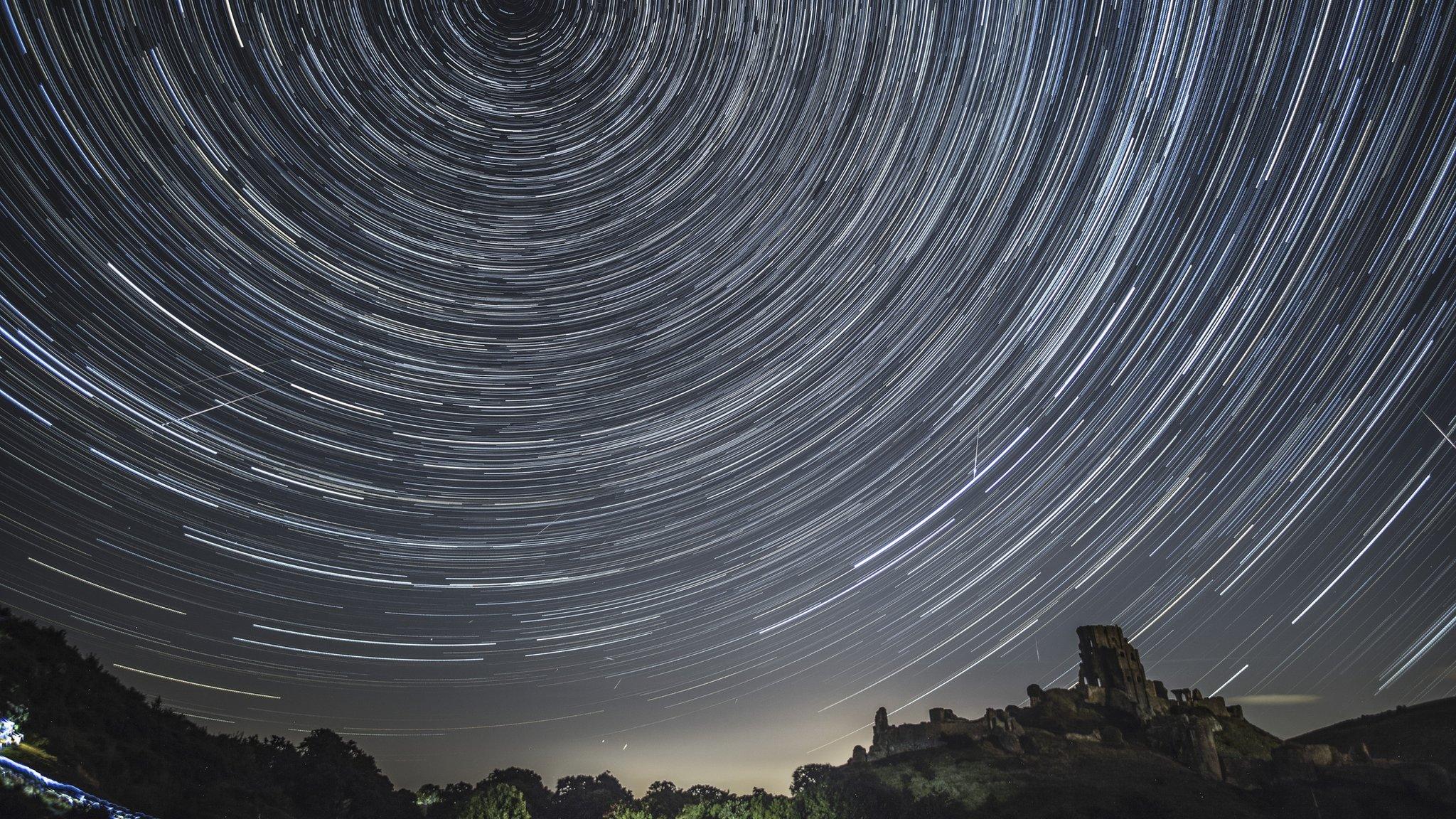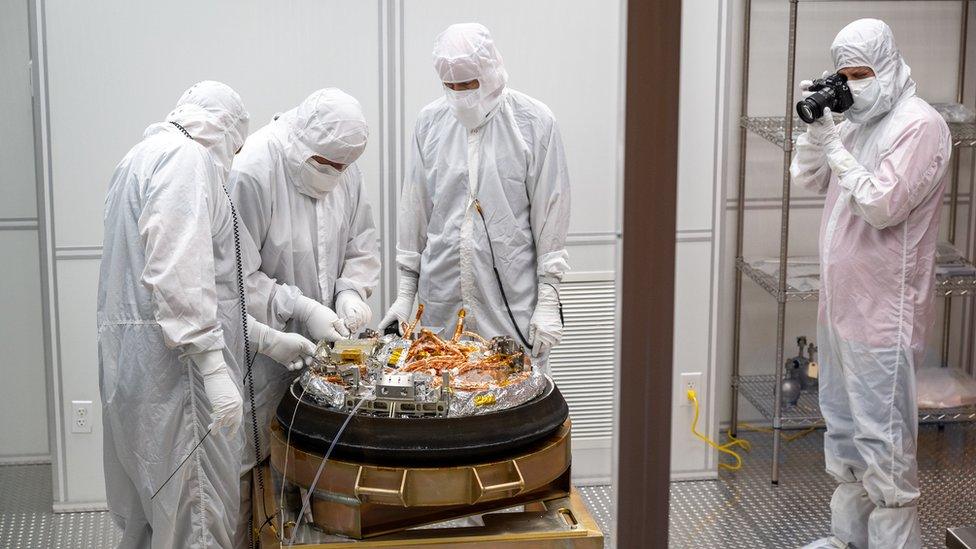Osiris-Rex: Scientists examine Bennu asteroid sample for first time
- Published
- comments

A team of UK scientists are getting their first chance to look at a rocky sample that has been collected from an asteroid.
The Osiris-Rex spacecraft left Earth back in 2016 and collected the sample in 2020 from an asteroid called Bennu, in a daring mission 205 million miles away from Earth.
It then took nearly three years for the Nasa spacecraft to travel back home and drop off the sample at a military base in the US.
For the last few days Dr Ashley King - a researcher from the Natural History Museum in the UK - and five other scientists have had the chance to take a first look at the sample in a special lab at the Johnson Space Center.
What did the scientists find?

Ashley King: "We've confirmed we went to the right asteroid"
The scientists discovered that the black, asteroid dust is made up of carbon and clay minerals rich in water.
Some scientists believe that asteroids like Bennu could have been responsible for bringing important materials to Earth - like water - to help kick-start life around 4.5 billion years ago.
"The reason that Earth is a habitable world - that we have oceans and lakes and rivers and rain - is because clay minerals, like the ones we're seeing from Bennu, landed on Earth 4.5 billion years ago." a cosmo-chemist from the University of Arizona explained.
It's beautiful, it really is - certainly what we've seen of it so far.
The asteroid dust was examined using lots of different scientific equipment, like an electron microscope, an X-ray diffraction and a computed tomography (CT) machine.
The researchers found out that around 5% of the asteroid dust's weight is carbon.
"That's a big deal. When the data came back, there were scientists on the team going 'Wow, oh my God!' said Dr Daniel Galvin, an analyst from Nasa's Goddard Space Flight Center.

The mission team thinks it has about 250 grams of asteroid dust in total, which will be split up between scientists to look at and learn more about it.
About 100 milligrams is expected to come to the UK to be further worked on by Dr King's department at the NHM, and by collaborators at the Open, Oxford and Manchester universities.
However most - around 75% - of the dust will be put into an archive by Nasa, to save for future generations of scientists to look at - using equipment that hasn't even been invented yet!
- Published13 February 2023

- Published25 September 2023

